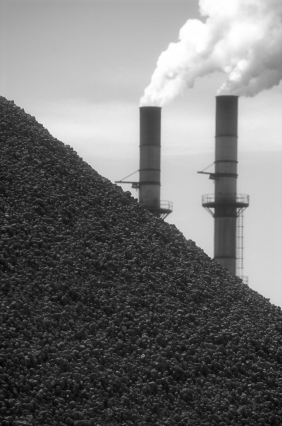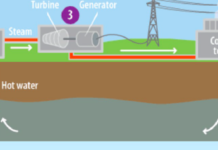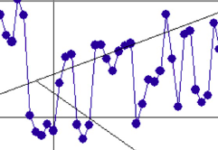Despite opposition from local environmental groups concerned that the development of a 400-acre coal ash landfill at the Labadie Power Plant, located 45 minutes outside of St. Louis and next to the Missouri River, could lead to groundwater contamination, AmerenUE is continuing to pursue development.

The landfill will give the Labadie Power Plant, a low-sulfur coal plant located on 1,100 acres of river bottomland, more space to store its coal ash, since other landfills on the site are filling up. Because the plant burns low-sulfur, it releases fewer pollutants into the air while generating energy from its four turbines. The turbines when all working can produce 16 million pounds of steam per hour. Two 100-ton coal trains arrive at the Labadie plant each day, meaning that the plant burns 10 million tons of coal a year, 7% of which—over half a million tons—is left as coal ash.
In a Sept. 6, 2011, St. Louis Post-Dispatch guest commentary, Mark C. Birk, vice president of power operations for Ameren Missouri, wrote that, “the ponds at Labadie are filling up to the point that alternatives must be developed.”
“These ponds are necessary disposal sites for coal ash that results from generating electricity at coal-fired power plants. These materials are inorganic non-hazardous waste and are commonly used in concrete and building materials,” Birk said in the same article.
According to AmerenUE, the landfill will store coal ash and would be double-lined to prevent toxins from leeching out and contaminating the groundwater. The landfill would include a system that would prevent floodwaters from reaching the ash. However the ash that remains after coal is burned for power contains toxic amounts of heavy metals, such as arsenic, lead, mercury, cadmium and more.
According to the Labadie Environmental Organization (LEO), coal ash does not decompose and has the potential to contaminate waters; airborne fly ash is hazardous to human health.
According to the Environmental Protection Agency, coal ash has the ability to cause “pollution from impoundment and landfills leaching into ground water and structural failures of impoundments.”
Despite the precautions that AmerenUE says it is taking to prevent contamination, some are not swayed.
“The reason the coal ash is a bad plan where it is, is because there is such a high groundwater table in Labadie Bottoms, which is groundwater seeping up,” Robert Criss, a geochemist at Washington University in St. Louis, said. “The second reason is because this landfill will be located in a floodplain and a floodway. The landfill will extend over 90% of the plain, 480 square miles, within 100-200 feet of the river. During the flood time, where is it all going to go?”
Others are concerned because AmerenUE already has a leaking coal ash pond. In a Sept. 1, 2011, article, the St. Louis Post-Dispatch reported that AmerenUE’s 154-acre coal ash pond in Labadie had been leaking in two different areas since 1992. One spot of the pond released five gallons per minute and the other leak released 30 gallons per minute. AmerenUE says that there is no groundwater contamination at this site.
The Missouri Department of Natural Resources (DNR) did not monitor the site, despite the fact AmerenUE’s water discharge permit expired 12 years ago. AmerenUE refused to comment about the coal ash pond or the proposed landfill.
Those downstream from the proposed landfill could possibly be affected if coal ash also contaminates the Missouri River. If coal ash comes in contact with the river, the water quality and habitats of Missouri animals and fish will be affected. There is also the possibility that the Mississippi River could be come contaminated if enough coal ash flows into it, according to LEO.
The Heartland Coalfield Alliance, an organization dedicated to help citizens protect their health and safety, has decried the landfill pointing out that 50% of Missourians drink water derived from the Missouri River.
The location of the Labadie Power Plant also raises questions as to the logic of using the site as a landfill.
“The other geological issues is that the soil will liquefy during earthquakes,” Criss said. “The floodplain soils are particularly susceptible to seismic effects and liquefaction which would damage the area. The physical consequences of the landfill would be enough for a geologist to dismiss this idea as not sensible.”
Despite a 23-page analysis from the LEO sent to the Missouri DNR citing possible groundwater contamination, possible catastrophic landfill collapse, and flooding risks, the state agency approved Ameren’s Detailed Site Investigation as meeting regulations. This allows AmerenUE to continue pursuing building the landfill. LEO members have been fighting with the Franklin County Commissioners, urging them not to allow a landfill in the floodplain. However, commissioners have rejected the request and approved the zoning amendment.
"Let them do a thorough analysis of the groundwater at the site, and characterize it and present that to the public and say, 'See, you have nothing to worry about,'" Maxine Lipeles, a Washington University in Saint Louis School of Law professor who is working with the LEO, said in a St. Louis Post-Dispatch article. Alison Dunaway

This work is licensed under a Creative Commons Attribution-NonCommercial-NoDerivs 3.0 Unported License














Controversy! Love it. I would have liked to hear more from the Ameren officials about the science behind their claims. What would a "-)ouble-liner" entail? How would that work? Why the double-liner if it’s "non-hazardous":-? Also, what does the DNR have to say about this? On what grounds did the DNR ok this site investigation given the LEO’s geological study to the contrary? I think there’s more than enough here for a follow up article!
Thanks for covering the issue. There are so many reasons to not landfill materials with toxic chemicals in floodplains…why is Ameren determined to dump there? Why put anything that is trash in a floodplain? Floodplains are for filtering our drinking water. Another report was just released yesterday showing Ameren operates ponds/landfills in IL where arsenic (causing cancer)has entered drinking water from waste disposal sites. I agree w/ David…there is a lot more to report on this issue. Clean drinking water is paramount to a successful, sustainable community. We should all be looking for sites like this in our own backyard!
I would like to commend Allison Dunaway for a well-written article on this very important issue. At a time when our federal agencies are reluctant to issue a much needed strong coal ash rule, it is encouraging to see young people speak out on this topic. Thank you!
Its a okay story
well looks likethe coal ash is polluting
very interesting[quote][/quote]
:ak shavon is right it is very insteresting to learn about
XD this is insteresting